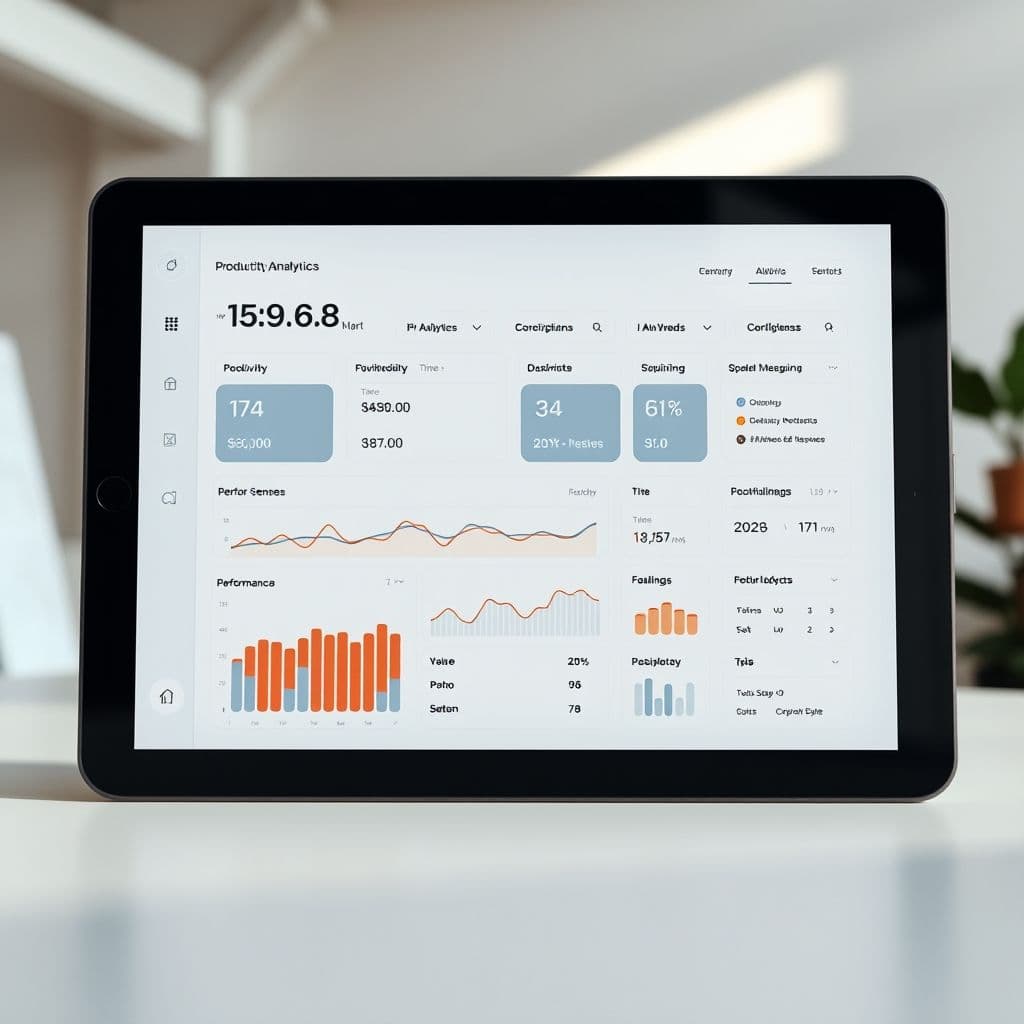The Timer Trick: How a Simple Productivity Hack Could Become Your Next SaaS Solution

Have you ever found yourself staring at a growing to-do list, paralyzed by the sheer volume of tasks ahead? You're not alone. The struggle with motivation, focus, and procrastination affects millions of people daily, from students cramming for exams to professionals facing mounting workloads. A surprisingly simple solution has emerged from TikTok creators and productivity enthusiasts alike: the timer method. But what if this basic hack could evolve into something much more powerful?
The Problem: Why We Struggle with Focus and Motivation
The core issue isn't just laziness or lack of discipline—it's a fundamental human struggle with task initiation and sustained attention. As revealed in the viral TikTok video and echoed in countless comments, people across different demographics face similar challenges. Students procrastinate on studying, professionals delay administrative tasks, and homemakers put off cleaning. The mental barrier to starting often feels insurmountable, creating a cycle of avoidance and guilt that actually reduces productivity rather than improving it.
This problem is compounded by modern distractions, particularly smartphones that offer instant gratification compared to the delayed rewards of completing tasks. Many users reported needing background noise or simultaneous activities to focus, while others struggled with allowing themselves genuine rest periods without guilt. The comments reveal a deep-seated need for structure and permission—permission to focus completely and permission to rest completely without the anxiety of unfinished work looming overhead.

The Timer Method: A Simple Solution with Limitations
The timer technique described in the video represents a psychological workaround for our brain's resistance to starting tasks. By setting a short, manageable timeframe (often 20 minutes), users trick their minds into beginning work with the promise of a definite endpoint. This method leverages several psychological principles: the Zeigarnik effect (unfinished tasks create mental tension), time boxing (constraining work to specific periods), and the concept of permission-granting for both work and rest.
However, the manual timer approach has significant limitations. Users must remember to set timers consistently, track their sessions manually, and lack insights into their productivity patterns over time. As commenters noted, they struggle with consistency, need more structure, and wish for better ways to track their focus sessions. The existing timer apps mentioned, like Focus Friend, address some needs but don't provide the comprehensive solution that many users are seeking.
SaaS Idea: Intelligent Productivity Timer with Analytics
Imagine a SaaS tool that takes the simple timer concept and transforms it into a comprehensive productivity system. This hypothetical application would allow users to set customizable work and rest intervals tailored to their specific tasks and mental patterns. Unlike basic timer apps, it would track productivity metrics across sessions, identifying patterns in when users are most focused, what types of tasks they procrastinate on most, and how different work-rest ratios affect their output quality.
The core functionality would include smart session suggestions based on historical data, task categorization to apply optimal timing strategies for different activity types, and integration with calendar systems to pre-schedule focus blocks. The system could learn individual productivity rhythms and suggest personalized work-rest patterns that maximize efficiency while preventing burnout. For users who need background stimulation, the tool might integrate with focus-enhancing audio environments or provide minimal distraction options.

The potential benefits of such a system extend beyond simple time management. By providing data-driven insights, users could understand their work patterns better, identify productivity obstacles, and develop more effective routines. The permission-granting aspect—clearly delineated work and rest periods—could help reduce the guilt associated with taking breaks while improving focus during work sessions. For ADHD users and others with attention challenges, such a tool could provide the external structure needed to compensate for internal executive function difficulties.
Potential Use Cases and Applications
This SaaS solution could serve diverse user groups with varying needs. Students could use it to break study sessions into manageable chunks with optimized break intervals. Remote workers might employ it to maintain focus without supervision and combat the isolation that often leads to procrastination. Creative professionals could utilize task-specific timing patterns that align with their creative rhythms rather than fighting against them.
The application could also have organizational implementations, helping teams coordinate focused work periods while respecting individual productivity patterns. Managers could gain insights into team work rhythms without micromanaging, and companies could reduce burnout by encouraging healthier work-rest cycles. The data collected (anonymized and aggregated) could even contribute to broader research on productivity patterns across industries and demographics.
Conclusion
The timer method represents a simple but powerful insight into human psychology and productivity. While effective in its basic form, it points toward a much larger opportunity for a comprehensive SaaS solution that could help millions overcome procrastination and focus challenges. By combining the psychological principles of time-boxing and permission-granting with modern analytics and personalization, such a tool could transform how we approach work and rest in our increasingly distracted world.
Frequently Asked Questions
- How would this SaaS tool differ from existing timer apps?
- Unlike basic timer apps that simply count down time, this hypothetical tool would incorporate productivity analytics, personalized session recommendations, and pattern recognition to optimize work-rest cycles based on individual performance data and task types.
- What would be the biggest technical challenges in developing such a system?
- Key challenges would include developing accurate productivity measurement algorithms, creating intuitive user interfaces that don't become distractions themselves, ensuring data privacy while providing valuable insights, and building effective personalization systems that adapt to changing user patterns over time.
- How could this tool help people with ADHD or attention difficulties?
- For users with attention challenges, the system could provide external structure and cues that compensate for executive function difficulties. The clear boundaries between work and rest periods, combined with progress tracking and achievement recognition, could help maintain motivation and reduce the overwhelm that often accompanies task initiation.


